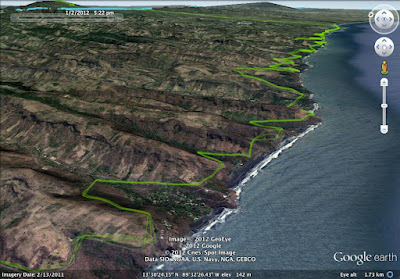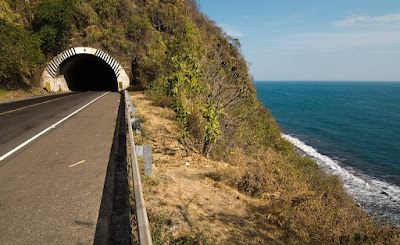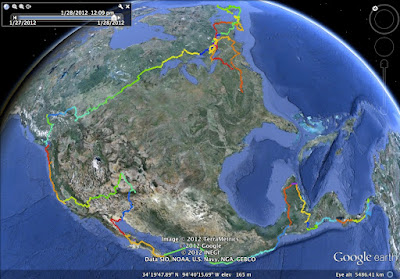Any overland traveller worth their salt loves a map. The excitement of a fresh paper map spread out on the floor, every mountain pass and izthmus, terra incognita promising adventure.
It's just as rewarding to revisit torn and battered maps on your return. The map looks different now, the terrain, roads and towns infused with memory of struggles and good times.
I feel the same way about electronic maps. Less romantic, surely. But everything has it's place and the flexibility of GPS software and Google Earth can really be an asset for sharing your adventure.
I'm not the type of traveller who enjoys pre-planning my route, road by road. I prefer spontaneity and flexibility, so I generally use my Garmin GPSmap 60CSx as a way of leaving "breadcrumbs, keeping the tracks as a record of where I've been.
as a way of leaving "breadcrumbs, keeping the tracks as a record of where I've been.
Adding a map to your trip report alongside your photos emphasizes how twisty that road was, how high the altitude, and just how damn lost you really were!

Pacific Coast - El Salvador

You may be able to directly import GPS tracks into Google Earth under
Tools > GPS But I had trouble getting the tracks from my Garmin 60CSx to show up, so I took the intermediate step of creating a Google Earth compatible .KMZ file
Here's what you'll need:
Once your data is imported, it's exactly like taking a photograph. You move around to find the most dramatic angle, the best compositon. Try zooming in and out, staying close to the ground or high in the air to best show the section of your route.
I'm not the type of traveller who enjoys pre-planning my route, road by road. I prefer spontaneity and flexibility, so I generally use my Garmin GPSmap 60CSx
Adding a map to your trip report alongside your photos emphasizes how twisty that road was, how high the altitude, and just how damn lost you really were!

Pacific Coast - El Salvador

You may be able to directly import GPS tracks into Google Earth under
Tools > GPS But I had trouble getting the tracks from my Garmin 60CSx to show up, so I took the intermediate step of creating a Google Earth compatible .KMZ file
Here's what you'll need:
- GPS
- GPS mapping software - usually comes with your GPS
- GPSvisualizer.com
- Google Earth
GPSvisualizer.com makes this very easy. Once you have imported your GPS data to your mapping software, save the file in the standard format for your mapping software -I used MapSource and saved the data as a .GDB
At GPSvisualizer.com you'll be able to upload your file and save in the Google earth .KMZ format.
Open the file in Google Earth and give it a moment to load.
Once your data is imported, it's exactly like taking a photograph. You move around to find the most dramatic angle, the best compositon. Try zooming in and out, staying close to the ground or high in the air to best show the section of your route.
If you need help on specific GPS issues, I highly recommend the ADVrider GPS forum. GPS geeks on call, these guys know what's up.













December 11, 2014 at 5:00 AM
Hi there! http://kml2gpx.com/ is also a reliable free converter to try making gpx to kml or kml to gpx formats. No need to install the program, the conversion can be done online, simple and easy. Thanks!